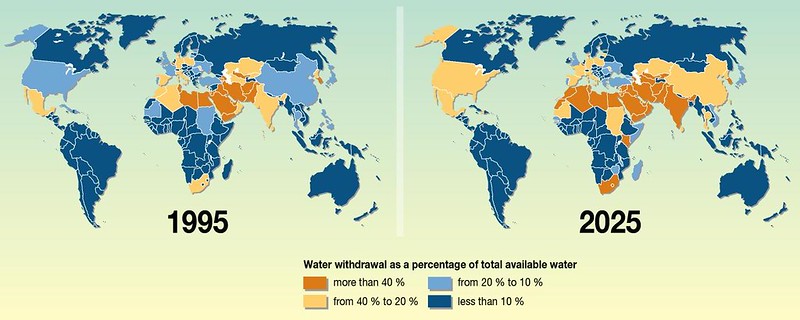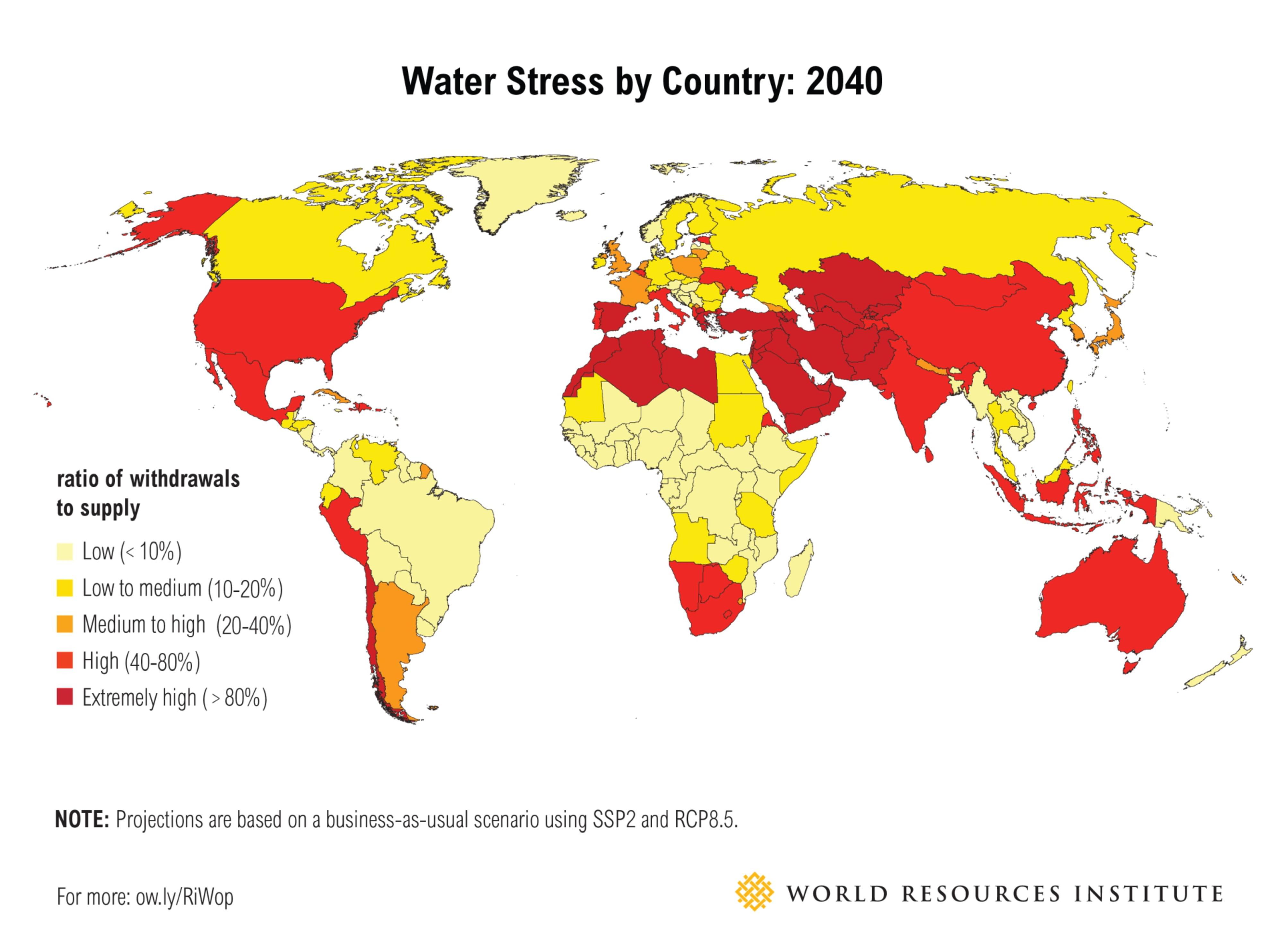Water Scarcity
Water represents life and is essential for our sustainability. Water covers 72% of the Earth’s surface or as we call it, the blue planet. The amount of freshwater is very low; in fact, it represents 2.8% of the total volume of water on Earth. Of this low percentage, ice and snow represent 2.1% and fresh water available for consumption is only 0.7%. Half of this 0.7% is made up of groundwater. Fresh water is a precious resource that is becoming scarce. Moreover, its availability is unevenly distributed around the world.
Here’s a map showing water withdrawal as a perfectage of total available water in the world:

(Source : GRID-Arendal resources library by:Philippe Rekacewicz)
It should only get worse if we see these predictions:

Water on our blue planet is therefore mostly salted. 11% of the world’s population, or about 844 million people, did not have access to drinking water in 2015 according to a WHO and UNICEF report (on progress in sanitation and water supply in 2017). Fresh water is not accessible for all at the same scale, which limits the development of some regions in the world and creates conflicts and wars.
Also, the world’s population has grown rapidly, and our lifestyle has changed. We consume much more than ever before. In the last 60 years, consumption has increased six fold. Today, 71% of the available fresh water is used for crop irrigation. The demand for potable water increases by 64 billion cubic meters each year on the planet. According to the UN, water needs will continue to increase by 50% until 2030 due to three things: population growth, an agricultural sector that needs more and more water and energy consumption. If we don’t change our consumption habits, we could face a 40% water deficit globally.
In addition to the risk of water scarcity, water quality has been deteriorating in the world. In developed countries, algae are a poison for natural water sources. In developing countries, industrial waste and chemicals end up in water tables and degrade water quality. Each year, millions of people die around the world from infected water.
We must at all costs preserve this rare and natural resource of fresh, potable water. How can we meet the growing water needs while preserving it and our environment?
In order to meet the increasing water needs, ecological and sustainable solutions have been found. It is possible to transform wastewater and rainwater into drinking water. Desalination also makes seawater drinkable. This latest technology is expanding in some regions of the world that suffer from a lack of access to clean water.
ECOPLAGE wants to offer a solution for this urgent challenge because of global warming and the other damages, water access is creating. Thanks to drainage, ECOPLAGE can provide highly filtered seawater to desalination plants for the production of drinking water. Water is a challenge for sustainable development. In order to meet the increasing needs in a sustainable way and reduce the impacts of climate change, better water management is necessary and urgent.
